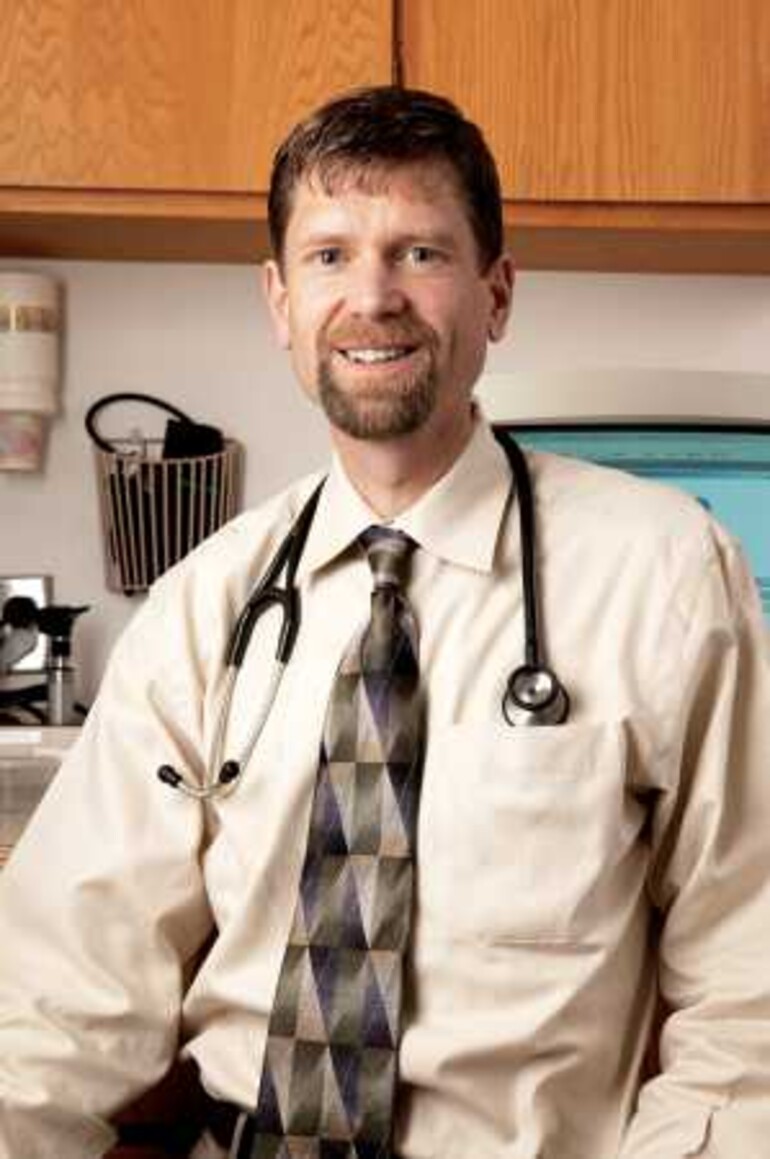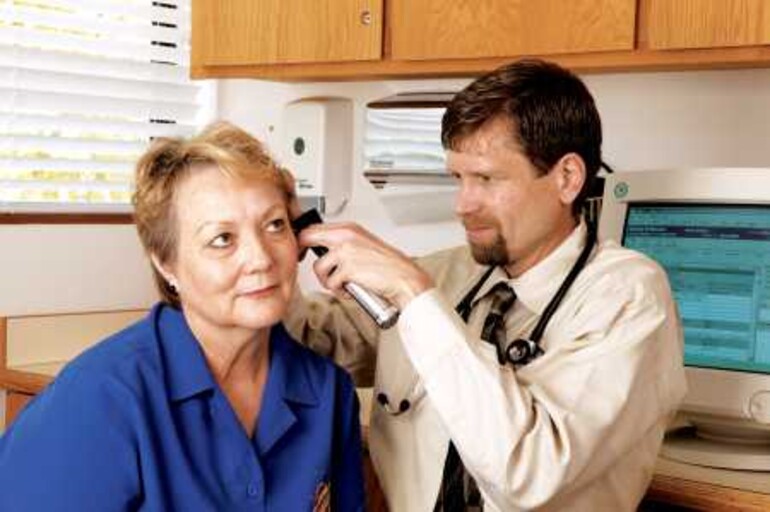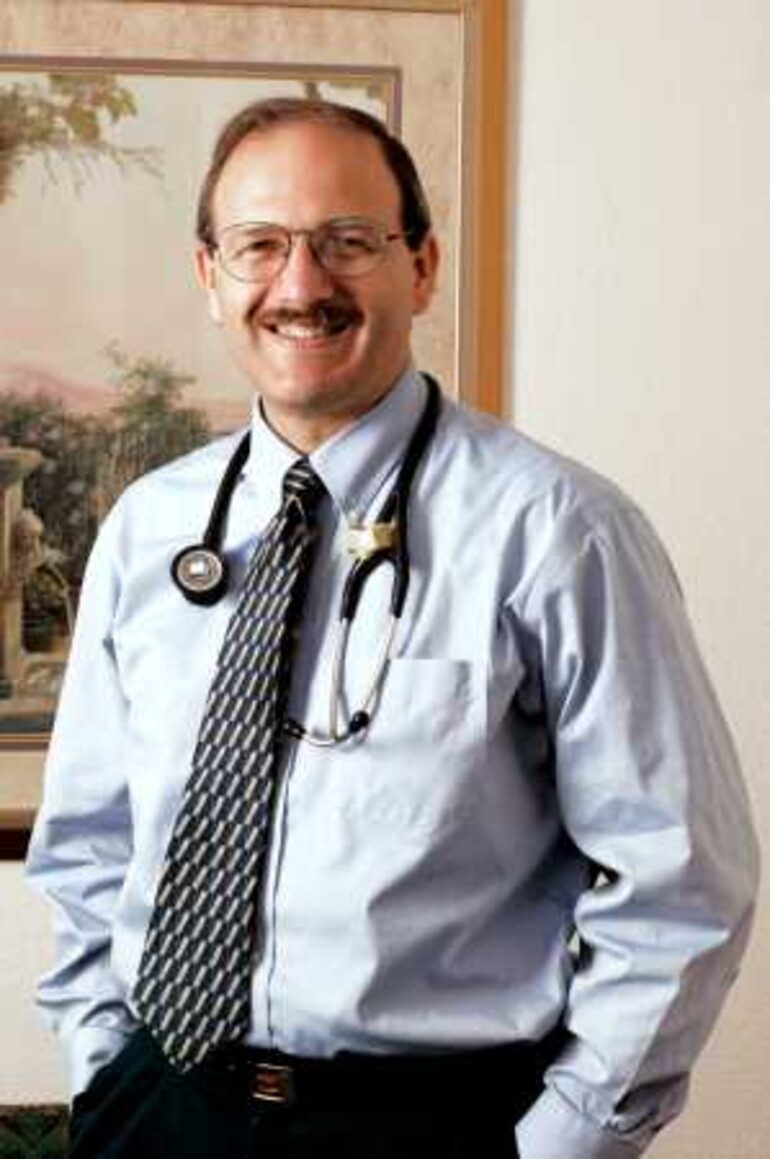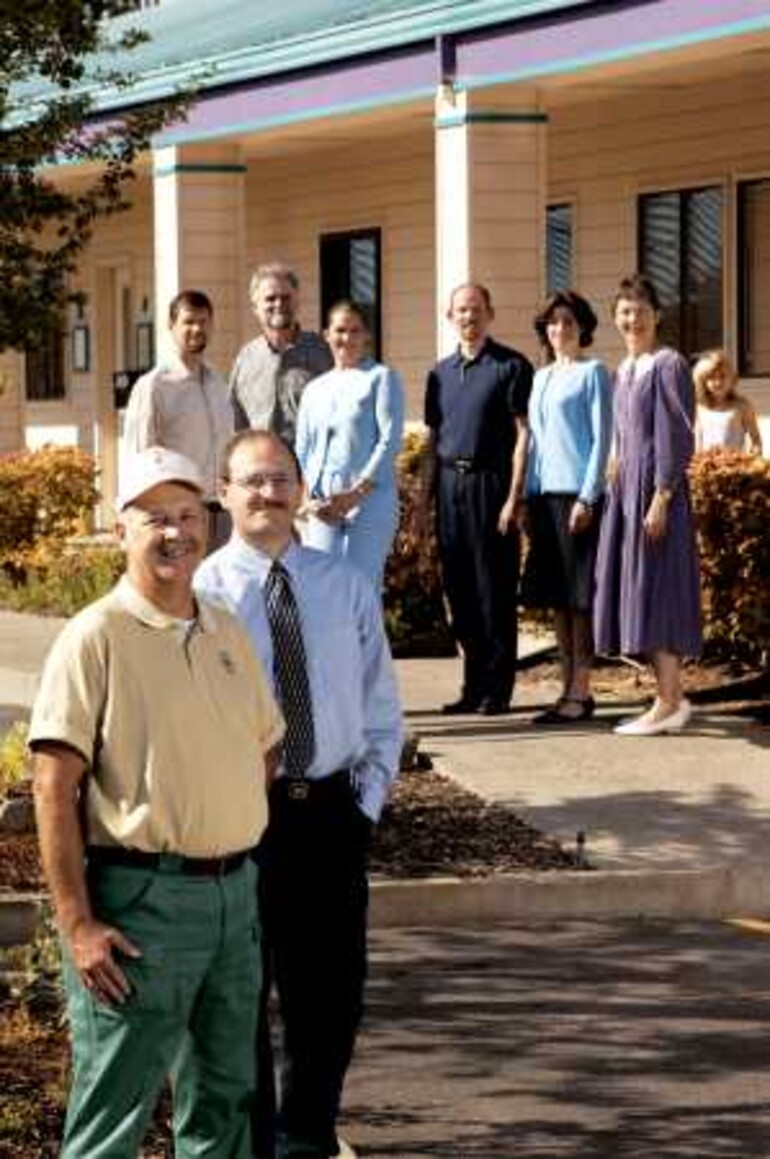When Roger talks about Virginia, it still brings tears to his eyes. They were married 40 years, but as breast cancer ravaged her body, he was faced with what seemed an imminent and unbearable loss.
The Fergusons came to Community Health Care of the Palouse (CHCP) simply seeking help with Virginia’s severe pain and chemotherapy side effects. But after meeting John Torquato, clinic doctor, they quickly realized something was very different.
On their first visit, he listened—for a full 45 minutes. On the second, he asked if he could pray with the couple. By the third, he had recognized that beyond her physical needs, Roger and Virginia desperately needed support in their time of crisis, and he invited them to join his small prayer and fellowship cell group.
Though raised Methodist, Roger hadn’t opened a Bible or said a prayer in years. “I memorized a lot of verses and sang in the choir, but the feeling wasn’t there anymore,” he admits. He knew nothing of Seventh-day Adventists, but agreed to attend for the sake of his ailing wife. “I wasn’t a religious person, but I figured I could fake it if I needed to.”
For the next three years, the cell group offered continual encouragement to the Fergusons through their difficult journey. Each Tuesday night, the group ate together, shared together and prayed together. At first, Roger and Virginia were cautious spectators, but over time they became active participants. District pastor Douglas Venn was there the night Virginia prayed aloud for the first time. “It was a heart unfolding to God, crying out in pain and sorrow, but also joy and hope,” he recalls. “I felt like I was on holy ground.”
From a doctor’s compassion in that clinic exam room to their spiritual rewakening in a supportive community of new friends, the Fergusons’ story is just one illustration of how an innovative medical practice and an energetic church plant have combined to heal bodies and win souls for Christ. Through Community Health Care of the Palouse,* God’s blueprint for medical ministry is proving to be a journey worth taking.
CHCP was a natural outgrowth of Dr. Robert Spady’s philosophy that medicine should be a ministry, and that patients should be treated as whole people—physically, emotionally and spiritually.
Early in his life as an aspiring teenage athlete, Robert had discovered the critical role lifestyle, disease prevention and spirituality play in overall wellness, and it soon became a personal passion.
The quest for physical health led to a quest for spiritual health and a realization of God’s incredible love for him. As his love for God grew, he had a strong desire to share what God had done for him with others. He was led to the idea of becoming a physician and working as a team with a church and a pastor. So when a new church plant started in Pullman, Washington, his idea for a church-clinic partnership took a giant step forward.
“It was really a convergence of several factors,” says Robert. “Our new church was eager to find ways to reach out to the community. Our pastor was open to the idea of working together. The time was right for us to create a partnership where we could really do more for our patients than any of us could do alone.”
Together, Robert and Douglas combined their forces and approached the Upper Columbia Conference (UCC) with the idea. Conference leaders quickly expressed support, and the newly planted church committed to be part of the project. In the spring of 2000, the bold experiment finally began—in Pullman and nearby Moscow, Idaho.
The mission was simple and audacious: to create from scratch a revolutionary health-care/church partnership model that would be replicable on a national scale—one that brought to life Ellen White’s vision of a wholistic and evangelistic medical outreach.
It was an enormous challenge—and opportunity. “The concept was an integration of Adventist health principles with the life of a local church, and that’s exactly what Ellen White described,” says Max C. Torkelsen II, UCC president. “I just felt that if we weren’t willing to take some risks and make this work, we weren’t fulfilling our mission.”
When patients step through the door of a community health-care clinic for the first time, they may not notice an immediate difference. It’s a doctor’s office, after all, with a waiting room, chairs and the typical things you’d expect to find in a clinic. But it soon becomes clear that this is a place where the traditional health-care model is turned upside down.
The unique CHCP approach is shaped by five critical principles: 1) a focus on disease prevention, 2) a commitment to whole-person care that integrates spirituality, 3) a respect for every patient’s choices, 4) commitment to science and revelation, and 5) a belief that a church-clinic partnership is the most affective model for healing.
These five core values tend to create a positive experience for clinic patients who have previously experienced frustrations with medicine that is often fast-paced and impersonal.
“I believe everyone deserves this kind of care,” says Roger. “Sometimes the root of the problem isn’t something that can be corrected by a pill or a surgery. Sometimes it takes a doctor who listens and cares enough to treat the whole person.”
The spiritual side of the community health-care ministry starts subtly, as quiet exchanges between patients and doctors in the course of medical care.
“I don’t do any preaching,” says Robert of his daily interactions. “I just tell the story of what God has done for me and let my patients know there’s a purpose in life.”
At times, as it did in the case of the Fergusons, such exchanges lead to study group involvement, or even church attendance.
That’s where the church-clinic partnership comes into play, and both Robert and Douglas agree that the energy and dedication of local church members have been essential to the success of CHCP.
“It was from the nest of the church plant that the dream was realized,” says Douglas, “and the benefit has been mutual.” He praises God for the impact the clinics have had on his new church.
One of the most tangible examples of this vibrant collaboration is the monthly “Saturday of Service” activity, an opportunity for fellowship and outreach that consistently draws high member participation.
Following church and a potluck lunch, a list is distributed—compiled by the doctors with patient permission—of people who could use a little extra help. Volunteers then scatter, discovering what Douglas calls “the true joy in service.”
Patients and families who have been the recipients of this outreach are effusive in their thanks. “Thank you for the love and time you shared on Saturday,” wrote one. “The love of Jesus is shining clearly through you. May He bless and keep you all as you minister for Him.”
“CHCP has made this church plant a significant and relevant presence in the community,” says Elder Torkelsen. “Even for those who aren’t initially spiritually inclined, we’re responding to needs, and we’re offering that help in the concept of something that is very cutting-edge—a wholistic view of humanity. I’m proud that the Adventist Church has taken the lead in that regard.”
Within the church family on other Sabbaths, Douglas has also seen his pastoral role reach new heights of effectiveness, and again credits the clinic partnership and the eagerness of its doctors to join him in ministry. “As a pastor I’ve been able to get to a deeper level with my members working shoulder to shoulder with them than I ever could working on my own,” he says.
On a Wednesday morning about two years after that first clinic visit, Roger’s worst fear came true—Virginia, the love of his life for more than four decades, passed away. Her loss left a huge void, but as before, he found strength in the enveloping compassion of Dr. Torquato’s cell group. “They opened their hearts and have become family to me,” he says.
Today, Roger turns his grief outward, working shoulder to shoulder with CHCP physicians, support staff, pastors and local church members meeting the very human needs of clinic patients and families. Whether he’s delivering food, visiting the lonely, or even telling the children’s story on a Sabbath morning, every act of service is a celebration of Virginia’s life, of a physician who took time to listen, and of his own spiritual awakening in a caring community of new friends.
“I’m like the prodigal,” he says. “I came back. And all because a doctor wanted to treat the patient, not just the disease.”
*For more information about this model of ministry, visit MedicineMeetsMinistry.com, or call Dr. Robert Spady at 877-WEL-LIFE.
Adapted from the February 24, 2005, Anchor Points edition of the ADVENTIST REVIEW.











